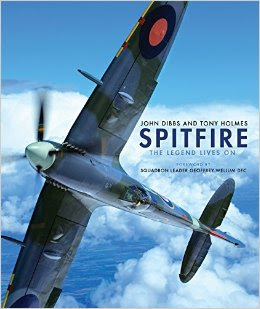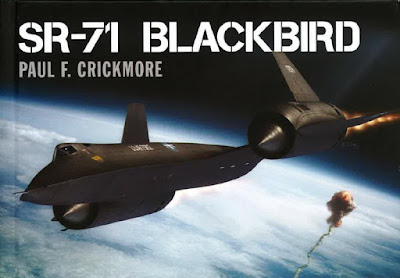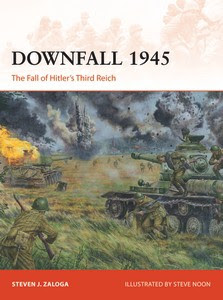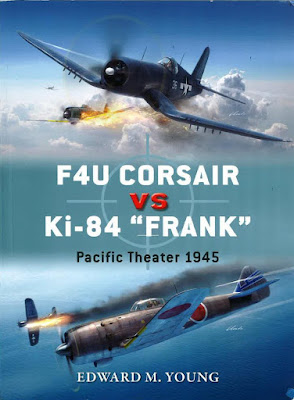Osprey titles that are now available for May 2016
Spitfire: The Legend Lives On
The Spitfire turns 80 on 5 March 2016, and the passion for the RAF's best-loved fighter is running at an all-time high. There are more than 50 Spitfires flying in the world today, and John Dibbs has shot virtually all of them 'on the wing' in his breathtaking style.
This eye-catching book combines a unique collection of stunning photos with poignant first-hand accounts of flying the aeroplane in combat, from some of the most famous aces to ever pilot the Spitfire, and from some of the pilots forgotten by history. Chronicling the history of the most iconic of British aircraft this is a 'must have' purchase for aviation enthusiasts.
CONTENTS
Foreword by Squadron Leader Geoffrey Wellum DFC
Introduction by Phill O'Dell
Author's Preface
The Early Marks
Spitfire Mk V
Spitfire Mk VIIIs
MH434
Spitfires in Blue
Packard Merlin Spitfire
Griffon Spitfires
Seafires
Spitfire Spectacular
From the Archive
SR-71 Blackbird
Lockheed's SR-71 Blackbird is one of the most iconic and famous jets ever built. Assembled in secret at Lockheed's Skunkworks, the Blackbird's vital statistics remain phenomenal decades later. It holds the airspeed record for a manned jet aircraft, operated at an altitude other aircraft could barely touch and was a marvel of technical engineering. Drawing on declassified material, leading SR-71 expert Paul Crickmore reveals the history of the most fascinating of aircraft, accompanied by a range of fantastic illustrations, photographs and facts about the world's most secret spy plane.
Contents
List of Abbreviations
Introduction
Chronology
A-12 Design and Manufacture
A-12 Oxcart Operations
Tagboard and Senior Bowl, the M-21 and D-21
Kedlock, the YF-12A
Senior Crown, the SR-71
Flying the SR-71
NASA Operations
Surviving Aircraft Histories
Appendices
Index
The SBS in World War II Paperback Edition
The Special Boat Squadron was Britain's most exclusive Special Forces unit during World War II. Highly trained, totally secretive and utterly ruthless, the SBS was established as an entity in its own right in early 1943. Unlike its sister unit, which numbered more than 1,000 men, the SBS never comprised more than 100. Led by men such as the famed Victoria Cross recipient Anders Lassen, the SBS went from island to island in the Mediterranean, landing in the dead of night in small fishing boats and launching savage hit and run raids on the Germans. Through unrivalled access to the SBS archives and interviews with the surviving members of the unit, Gavin Mortimer has pieced together the largely forgotten dramatic exploits of this elite fighting force. In this new and updated edition, featuring a plate section of photographs and additional content including new text, the unit and its members are finally granted the recognition that they so richly deserve.
Contents
Dedication
Acknowledgements
Introduction
Chapter 1. Birth of the Boat Service
Chapter 2. From Service to Squadron
Chapter 3. Sick in Sardinia
Chapter 4. A Close Call in Crete
Chapter 5. Armistice and Uncertainty
Chapter 6. The Germans Fight Back
Chapter 7. Defeat in the Dodecanese
Chapter 8. New Recruits for a New Year
Chapter 9. Piracy on the High Seas
Chapter 10. Turkish Deceit for the SBS
Chapter 11. Caught, Questioned, Vanished
Chapter 12. Vengeance
Chapter 13. Germany on the Run
Chapter 14. Into the Balkans
Chapter 15. The Nazis' Greek Tragedy
Chapter 16. Adriatic Offensive
Chapter 17. Andy Lassen's Big War
Chapter 18. The End of the Odyssey
Glossary
Endnotes
Bibliography
Index
Downfall 1945
As the final month of fighting in Europe in 1945 dawned the Allies embarked upon a series of mopping up operations, destroying the last centres of German resistance as the essentially defeated Wehrmacht fought on in increasingly desperate conditions, driven on by the explicit no surrender order issued by Hitler.
Yet at the same time, the Allied alliance was already on shaky ground, as German resistance was crushed the Allies began to eye each other nervously across a battle torn Europe, with the politically driven military decisions to have a huge impact on the future of the continent. This book traces the final operations of the war, from the liberation of Denmark, the Allied drive towards the Baltic straits, incursions in Yugoslavia, Hungary, Czechoslovakia and engagements in Eastern and Western Germany, whilst also analyzing how the Allied strategies in the final days of the war were a hint of the future difficulties that would drive the Cold War.
Contents
Introduction
Chronology
Opposing commanders
Opposing armies
Opposing plans
The campaign
Aftermath
The battlefield today
Further reading
Index
Operation Totalize 1944
In Operation Totalize, Lieutenant-General Guy Simonds' II Canadian Corps launched an attack from its positions along the Bourguébus Ridge south of Caen, striking south-southeast astride the main Caen-Falaise road toward the high ground that dominated the town of Falaise and the key west-east lateral road that ran through this town. Using sophisticated operational art the initial break-in achieved rapid success; indeed, more tactical success than any previous Allied break-in attack in Normandy.
However, despite this rapid initial success, Totalize did not subsequently secure a decisive operational-level victory. Indeed, Simonds' forces subsequently struggled swiftly to complete the second break-in battle, and to transit into rapid exploitation operations. Had Simond's force been successful the German army may not have been able to extract themselves from the Falaise pocket and would have been surrounded and defeated - possibly bringing about the early end of the war in Europe.
Contents
Introduction
Chronology
Opposing commanders
Opposing armies
Opposing plans
The campaign
Aftermath
The battlefield today
Further reading
Index
F4U Corsair vs Ki-84 Frank
The Vought Corsair was the first American single-engined fighter to exceed 400 mph and establish dominance over the legendary Mitsubishi Type Zero-sen. The Ki-84 Hayate was introduced by the Japanese specifically to counter this growing American dominance of the skies over the Pacific. Built in greater numbers than any other late war Japanese fighter, nearly 3000 were completed between 1944 and 1945. This volume examines the clashes between the Corsair and Ki-84 in the closing stages of the war, revealing how Corsair pilots had to adapt their techniques and combat strategies to adapt to these newer types. It also reveals how the kill rate was largely driven by the reduced quality of fighter pilots after the high casualty rates inflicted on the Japanese air force during the air battles over the Solomon Islands.
Contents
Introduction
Chronology
Design and Development
Technical Specifications
The Strategic Situation
The Combatants
Combat
Statistics and Analysis
Aftermath
Further Reading
Index
US Army Rangers 1989-2015
Written by an expert on modern Special Forces units and the operations they undertake, this book explains the evolution of the Rangers' missions in Panama, the first Gulf War, Somalia and the post 9/11 invasions of Iraq and Afghanistan. It reveals the training and organizational changes that the unit has undergone and investigates in particular how their doctrine and tactics have changed during the 14-year war in Afghanistan.
At the beginning of the war the Rangers were an elite light infantry unit of picked men tasked with short duration recon raids and securing ground behind enemy lines in support of Special Forces; they have since evolved into a special-mission unit themselves - on the cusp of being assigned to the Joint Special Operations Command.
Contents
Introduction - the ‘ranger' in history, as a behind-the-lines guerrilla soldier - the US Army Rangers, from World War II to Vietnam and after
Changes in structure and operational remit since the 1980s - Ranger Indocrination Program, Ranger Assessment & Selection Program, Ranger School, and the Ranger Regiment
Operation Just Cause: Panama, 1989 - the Rangers' last ‘conventional war'
Op Desert Storm: Iraq, 1991 - from combat search-and-rescue to long-range heliborne assault
Op Gothic Serpent: Somalia, 1993 - the lessons of ‘Black Hawk Down!'
Op Enduring Freedom: Afghanistan, 2001-present - the wide range of missions accomplished, and coordination with other special units
Op Iraqi Freedom, 2003-1010 - from hunting Scuds, to hunting down al-Qaeda as part of the JSOC Task Force - comparisons with Afghanistan
The evolution of the modern Ranger - the Ranger Reconaissance Company & Regimental Special Troops Battalion
The future
Weapons, equipment and vehicles
Bibliography
British Guided Missile Destroyers
In the years after World War II, new guided missile technology offered surface ships the chance to destroy airborne threats from afar, thereby preserving their role in naval warfare. This book examines the technology and combat performance of Britain's guided missile destroyers over half a century.
Uniquely among modern destroyers, three of these classes have been tested in battle against the aircraft and missiles of another modern navy - in the Falklands War - as well as being deployed during the Gulf War. Written by an expert on British naval technology, this book assess the changing technology of the Royal Navy's destroyers over half a century, including an examination of the Royal Navy's newest and most capable warship, the Type 45.
Contents
Introduction: the maritime air threat and the defensive missile
The County-class destroyers
The Type 82 destroyer: HMS Bristol
The Type 42: Sheffield-class destroyers
The Type 45: Daring-class destroyers
Operational Service
Conclusion
Bibliography
Index
German Machine Guns of World War I
World War I's defining weapon for many, Germany's MG 08 machine gun won a formidable reputation on battlefields from Tannenberg to the Somme. Although it was a lethally effective weapon when used from static positions, the MG 08 was far too heavy to perform a mobile role on the battlefield. As the British and French began to deploy lighter machine guns alongside their heavier weapons, the Germans fielded the Danish Madsen and British Lewis as stopgaps, but chose to adapt the MG 08 into a compromise weapon - the MG 08/15 - which would play a central role in the revolutionary developments in infantry tactics that characterized the last months of the conflict. In the 1940s, the two weapons were still in service with German forces fighting in a new world war. Drawing upon eyewitness battlefield reports, this absorbing study assesses the technical performance and combat record of these redoubtable and influential German machine guns, and their strengths and limitations in a variety of battlefield roles.
Contents
Introduction
Development
Use
Impact
Conclusion
Bibliography
Index
The M3 Grease Gun
Influenced by the German MP 40 and the British Sten, the .45-caliber M3 "Grease Gun” served as the primary US submachine gun for almost a half-century. Designed to replace the expensive Thompson SMG, the M3 was issued to airborne troops and others during World War II thanks to its compact design with sliding wire stock. An improved variant, the M3A1, was favored by armored crews right up to the beginning of the 1990s, seeing service in 1991's Operation Desert Storm. In Korea and Vietnam, reconnaissance troops and special-operations forces were at times armed with the M3A1 - also available in a suppressed version - and it was the first SMG issued to the US counterterrorist unit Delta Force. Featuring full-color artwork, first-hand accounts, and archive and close-up photographs, this is the engaging story of the M3 submachine gun.
Contents
Introduction
Development
Use
Impact
Conclusion
Bibliography
Index
Osprey Publishing Ltd










No comments:
Post a Comment